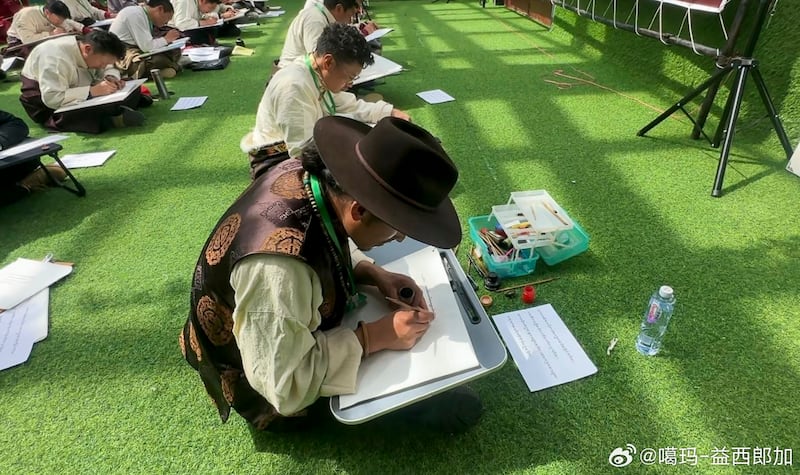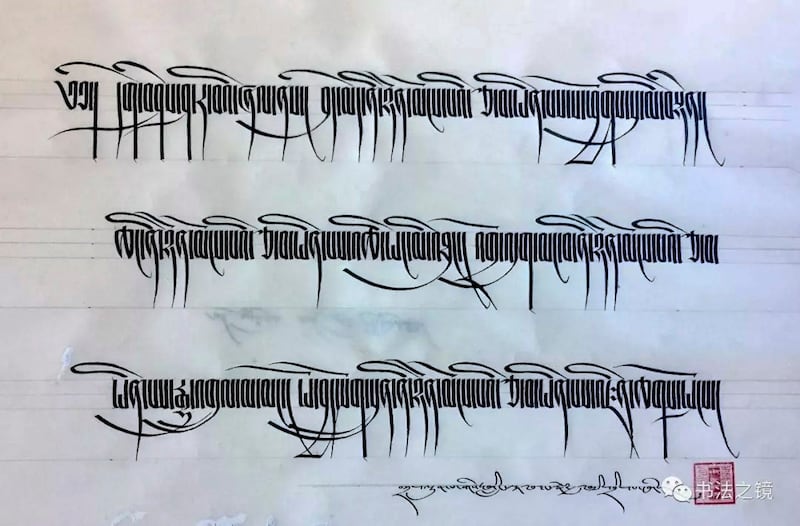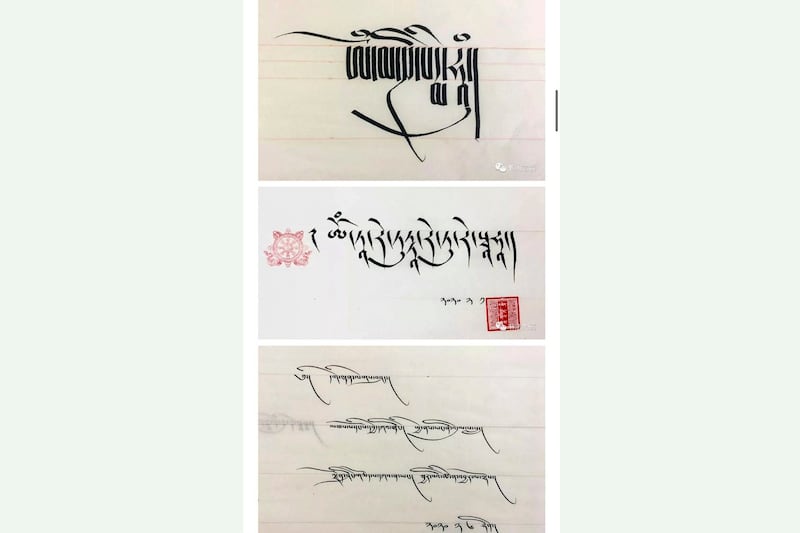For several years now, Tibetan Calligraphy Day has been a way for Tibetans to keep their language and heritage alive amid China imposing restrictions and bans on use of the language.
On April 30, Tibetans across the Tibet Autonomous Region, in northern India as well as in Chinese provinces where Tibetans live participated in competitions, festivals and displays of calligraphy to mark the day on April 30, sources told Radio Free Asia.
The Tibetan Language Preservation Committee, a group based in Gangtok in northern India that is dedicated to preserving the Tibetan language, observed the day by organizing a calligraphy competition.
“His Holiness the Dalai Lama has consistently urged Tibetans in exile to safeguard and preserve our invaluable Tibetan language,” said Tenzin Tsephel, president of theGangtok Regional Tibetan Youth Congress.
Tibetans throughout Tibet shared their writings and opinions on Tibetan calligraphy and the significance of the Tibetan language on social media platforms.
Several monasteries and educational institutions in Tibet and in Tibetan-populated areas of China organized events to commemorate the day. Over 300 participants gathered in Barkham county of Ngawa Tibetan and Qiang Autonomous Prefecture in northwestern Sichuan province.

Videos posted on social media showed Buddhist monks in crimson robes who gathered with brushes, ink and paper to display their writing skills at the Tsangkor Sholma-gon Pel Ngedhon Tashi Choekorling Monastery in Qinghai province on April 30.
The Labrang Calligraphy Association in Sangchu county of Kanlho Tibetan Autonomous Prefecture in Gansu province also organized calligraphy exhibitions in all county schools.
Banning Tibetan
Since 2020, the Chinese government has tightened its restrictions on the use and study of Tibetan, closing private Tibetan schools in Tibet and intensifying Chinese-language education in the schools in the name of promoting uniformity in the use of textbooks and instructional materials.
Just recently, authorities banned students in schools in a Tibetan-populated area in China's Sichuan province from speaking their native language, following a similar case in another part of the province.
Tibetan Calligraphy Day began in 2017 following a Tibetan calligraphy conference held at Qinghai Nationalities University in western China.
The significance of the date – April 30 – lies in its numerical representation: The number four symbolizes the number of vowels in the Tibetan alphabet, while 30 represents the number of consonants.

Given the importance of Buddhism to Tibetans, many traditions in Tibetan calligraphy come from religious texts written by monks in monasteries.
Despite the absence of a dedicated Tibetan school for children in Gangtok, a youth congress there began a Sunday school program in 2018 to teach children how to read and write Tibetan.
The day is more than just commemorating Tibetan calligraphy and hosting writing competitions, said Tsering Dhondup, a volunteer Tibetan teacher at the Sunday school.
“We must also consider Tibetan alphabets, vowels and the Tibetan language as a whole, given its vast richness in representing Tibet,” he told Radio Free Asia.
Preserving a culture
Pema Tsultrim, a renowned Tibetan calligrapher based in Tibet, organized the Pema Golden Pen Competition in Chengdu, attracting about 100 Tibetan calligraphy experts, historians and writers from across Tibet who discussed the significance of Tibetan calligraphy.
He said the contest aimed to preserve the rich heritage of Tibetan calligraphy and to provide participants with a platform to display their talent.
Among the more than 1,200 calligraphy submissions from Tibetans various regions of Tibet, Dhondup Norbu, a resident of Lhasa, was chosen as the contest winner.
“Calligraphy holds significant importance in preserving Tibet’s unique traditions,” said Geshe Lobsang Monlam, a Buddhist scholar, lexicologist and leading innovator of Tibetan information technology.

“Through various calligraphy styles, we can understand writings that date back over 1,000 years,” he said. “Despite the presence of numerous dialects within Tibet, our ability to communicate and understand one another is facilitated by these Tibetan calligraphies.”
The day was observed in Tibetan communities around the world.
The Latse Project, a U.S.-based volunteer nonprofit group that promotes Tibetan language use and literacy, along with the Center for South Asia and the Center for East Asian Studies at the University of Wisconsin-Madison held an event on Tibetan calligraphic arts on April 26-27.
In 2018, The Latse Project organized the first Tibetan Calligraphy Day to be held outside Tibet in New York City, and held subsequent calligraphy exhibits in Paris, France, and at the University of Virginia in Charlottesville.
Translated by Tenzin Dickyi for RFA Tibetan. Edited by Roseanne Gerin and Malcolm Foster.
